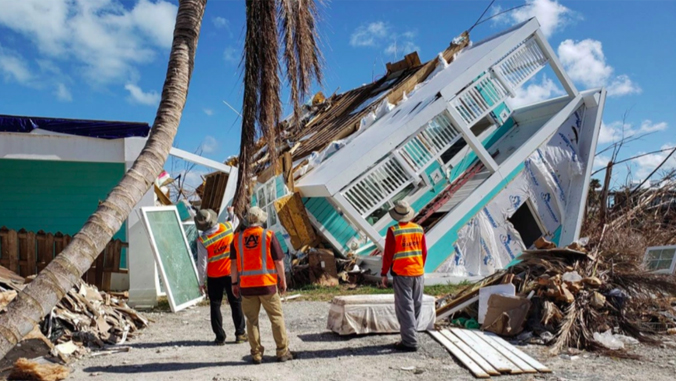
2019. (Image credit: StEER, Structural Engineering Extreme Event Reconnaissance)
Disaster losses from wind, floods, earthquakes and fires in the U.S. now average $100 billion per year, and in 2017 exceeded $300 billion, according to the National Institute of Building Sciences. Such losses affect communities large and small across our nation.
A team led by a University of Hawaiʻi at Mānoa College of Engineering professor offers practical research approaches to mitigate these losses in the NHERI (Natural Hazards Engineering Research Infrastructure) Science Plan, Third Edition.
- Download the NHERI Science Plan, Third Edition
“Research engineers, working across disciplines, can design safer structures and make our communities more resilient,” said lead author Ian Robertson, Arthur N.L. Chiu Distinguished Professor in the UH Mānoa Department of Civil, Environmental and Construction Engineering. “In this third edition of the NHERI Science Plan, we present ways researchers can leverage National Science Foundation (NSF)-funded resources, from centrifuges to cyberinfrastructure—all to protect our civil infrastructure and our communities.”
Guide for natural hazards researchers
The document outlines the field’s current challenges and key research questions and includes example research campaigns. In addition, the science plan provides details on resources and opportunities for research, including interdisciplinary-team research, using one or more of the 13 NHERI experimental facilities.
The NHERI Science Plan, Third Edition also serves to inspire and guide early career researchers exploring disaster research in large-scale experimentation, computer modeling and simulation, the social sciences, and novel engineering techniques for mitigating damage from earthquake, wind, fire and coastal hazards.
New in the third edition
This third edition of the NHERI Science Plan is expanded to incorporate all NSF-funded NHERI resources, including:
- Details related to computer simulation and modeling using NHERI SimCenter applications
- Social science best practices advanced by NHERI CONVERGE
- Extreme events reconnaissance and research
Leveraging insights from the NHERI SimCenter, CONVERGE and extreme event teams, the third edition presents a decidedly interdisciplinary approach to natural hazards research.
“We have significantly updated the Key Research Questions,” said Robertson. “Also, each of our example research campaigns demonstrates strategies and tactics for incorporating the strengths of multiple disciplines to achieve sustainable, equitable research goals.”
Another highlight of the third edition is a comprehensive list of extreme events research and reconnaissance teams, NSF-funded groups dedicated to collecting perishable data before, during and after earthquakes, windstorms, tsunamis and other natural hazards.
Sample research campaigns outlined in the science plan include:
- Understanding and reducing vulnerability of low-income communities to windstorms
- Increasing regional resilience to mega seismic events: Cascadia Subduction Zone earthquake and tsunami
- Cascading and compounding impacts of natural hazards
- A community-driven integrated research campaign for hurricanes
- Infrastructure impacts of climate change-induced migration
- Net-zero building materials and construction
- Securing our nation through communication and education
NHERI is a nationwide, multi-million dollar NSF-funded network dedicated to preventing damage from hazards like earthquakes, tsunamis, wildfires and windstorms. Robertson, a natural hazards engineer and senior personnel with the NHERI Network Coordination Office, (NCO), led an interdisciplinary team of experts to revise the third edition.
“Ian and the individuals on the team have had direct experience using NHERI resources, leading their own research teams, and implementing the results into practice,” said Julio Ramirez, Purdue University professor and principal investigator for the NHERI NCO. “We hope this NHERI community document stimulates ideas for engineers and scientists developing grant proposals seeking to make our communities safer and more resilient against natural hazards.”

